- Benefits of Shade-Tolerant Houseplants
- 1. Thrive in Low-Light Conditions
- 2. Improve Indoor Air Quality
- 3. Enhance Aesthetics
- 4. Reduce Stress and Improve Well-being
- 5. Easy to Maintain
- Choosing the Right Shade-Tolerant Houseplants
- Consider Light Requirements
- Choose Varieties Adapted to Low Light
- Consider Leaf Color and Texture
- Check Watering Needs
- Avoid Varieties That Require Full Sun
- Consider Artificial Light Sources
- Essential Care for Shade-Tolerant Houseplants
- 1. Choose the Right Location
- 2. Provide Adequate Watering
- 3. Use Well-Draining Soil
- 4. Maintain Consistent Humidity
- 5. Fertilize Regularly
- 6. Keep an Eye for Pests
- 7. Prune and Groom
- 8. Monitor Temperature
- Watering Tips for Shade-Tolerant Houseplants
- 1. Check the soil moisture
- 2. Use room temperature water
- 3. Water thoroughly
- 4. Adjust watering frequency based on season
- 5. Avoid waterlogged soil
- 6. Consider using a moisture meter
- 7. Mist the leaves
- 8. Monitor your plants
- Fertilizing Shade-Tolerant Houseplants
- 1. Choose the Right Fertilizer
- 2. Follow the Recommended Application Rates
- 3. Use a Slow-Release Fertilizer
- 4. Apply Fertilizer During the Growing Season
- 5. Water Properly after Fertilizing
- 6. Monitor Plant Reactions
- Common Issues with Shade-Tolerant Houseplants
- 1. Overwatering
- 2. Insufficient Light
- 3. Nutrient Deficiencies
- 4. Pests and Diseases
- 5. Improper Temperature and Humidity
- 6. Wrong Potting Mix
- Propagating Shade-Tolerant Houseplants
- 1. Stem Cuttings
- 2. Leaf Cuttings
- 3. Division
- Q&A:
- What are some houseplants that thrive in low-light conditions?
- How often should shade-tolerant houseplants be watered?
- Can shade-tolerant houseplants be placed near a north-facing window?
- Are there any specific care tips for shade-tolerant houseplants?
- What are the benefits of having shade-tolerant houseplants in a home?
- Video: 9 Essential Tips To Make Your Houseplants Thrive
Many homes and apartments have areas that don’t receive a lot of natural light, making it difficult to find houseplants that can thrive in these conditions. However, there are plenty of shade-tolerant houseplants that can add beauty and greenery to these darker areas of your living space.
Shade-tolerant houseplants are perfect for locations such as hallways, bathrooms, and offices with limited access to sunlight. These plants have adapted to low-light conditions by developing larger leaves or by storing energy in their roots. They can bring life to any space, even if it’s far away from a window.
When it comes to caring for shade-tolerant houseplants, there are a few important factors to consider. First and foremost, it’s crucial to find the right plant for the level of shade your space receives. Some plants can tolerate deep shade, while others prefer bright indirect light. Understanding your plant’s light requirements is key to ensuring its health.
In addition to light, water is vital for the well-being of shade-tolerant houseplants. These plants generally prefer a bit more moisture in the soil compared to their sun-loving counterparts. However, it’s important not to overwater them as this can lead to root rot. Proper watering techniques, such as allowing the soil to dry out slightly between waterings, can help maintain the right balance.
Finally, regular maintenance is essential to keep your shade-tolerant houseplants looking their best. Dusting the leaves with a soft cloth or using a gentle spray of water can help remove any build-up and keep their foliage vibrant. Additionally, it’s advisable to check for pests regularly and take necessary steps to address any issues.
Benefits of Shade-Tolerant Houseplants
Shade-tolerant houseplants offer several benefits that make them a great choice for indoor gardening. Here are some of the main benefits:
1. Thrive in Low-Light Conditions
Shade-tolerant houseplants are specially adapted to survive and thrive in areas with low light. They have the ability to photosynthesize and grow with minimal exposure to sunlight. This makes them perfect for areas in your home that receive limited natural light, such as north-facing windows or rooms with heavy curtains.
2. Improve Indoor Air Quality
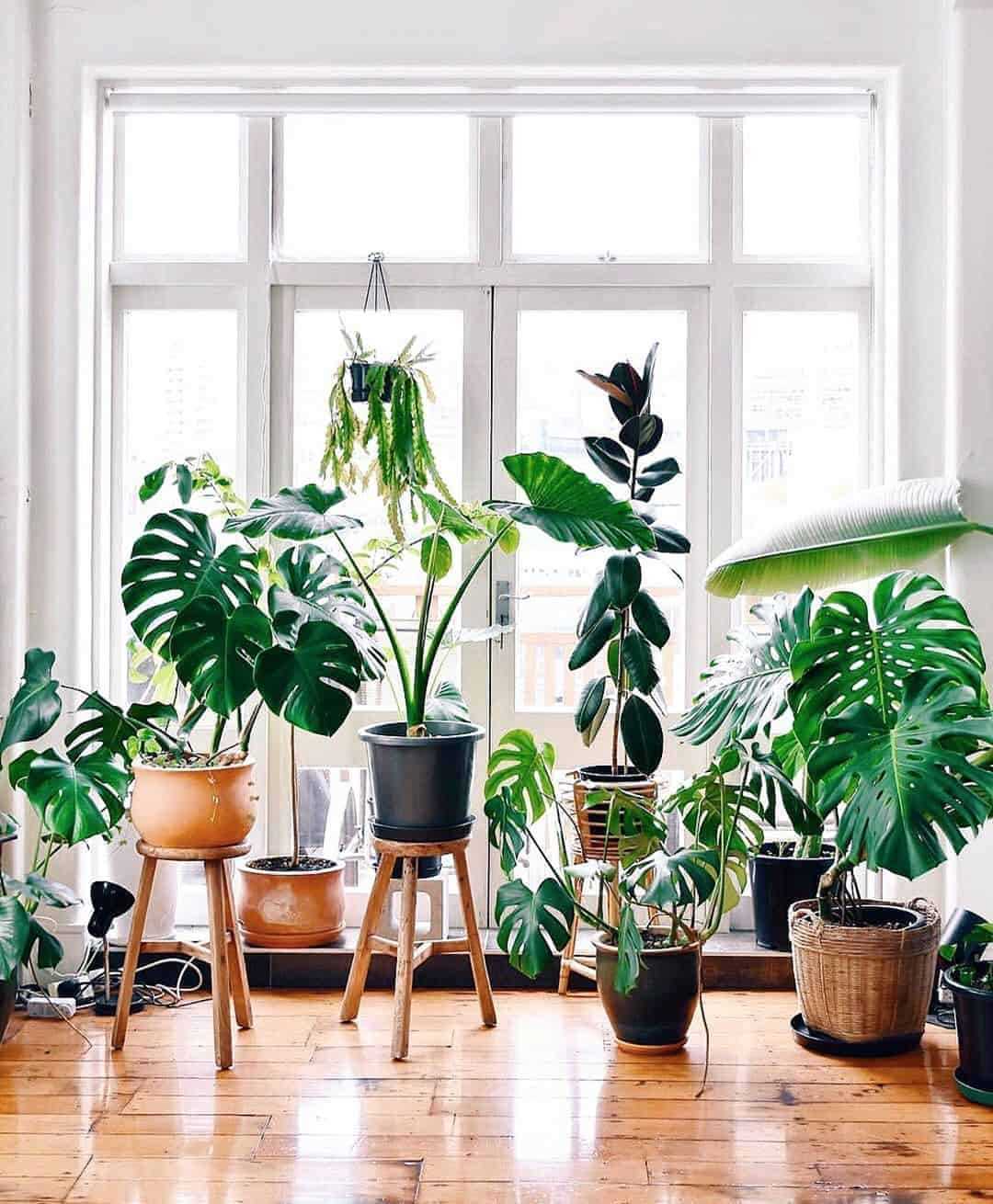
Houseplants in general are known to improve indoor air quality by filtering out harmful pollutants and releasing oxygen. Shade-tolerant houseplants are no exception. They can help remove toxins from the air, such as formaldehyde and benzene, which are commonly found in indoor environments. This can lead to a cleaner and healthier living space.
3. Enhance Aesthetics
Shade-tolerant houseplants come in a wide variety of shapes, sizes, and colors, which can add a touch of beauty and greenery to any indoor space. Whether you prefer large leafy plants or delicate ferns, there is a shade-tolerant houseplant that can complement your interior decor and create a more visually appealing environment.
4. Reduce Stress and Improve Well-being
Having houseplants, including shade-tolerant varieties, can significantly reduce stress levels and improve overall well-being. Studies have shown that being around plants can have a calming effect on the mind and body, promoting relaxation and reducing anxiety. Caring for houseplants can also provide a sense of purpose and fulfillment, which can contribute to a positive mental state.
5. Easy to Maintain
Shade-tolerant houseplants are generally easier to maintain compared to their sun-loving counterparts. Since they require less direct sunlight, they can tolerate lower light conditions and can go longer periods without watering. This makes them a great choice for people with busy lifestyles or those who are new to plant care.
In conclusion, shade-tolerant houseplants not only bring beauty and freshness to your home but also offer a range of benefits for your well-being and indoor environment. Consider adding some shade-tolerant plants to your collection and enjoy the advantages they bring.
Choosing the Right Shade-Tolerant Houseplants
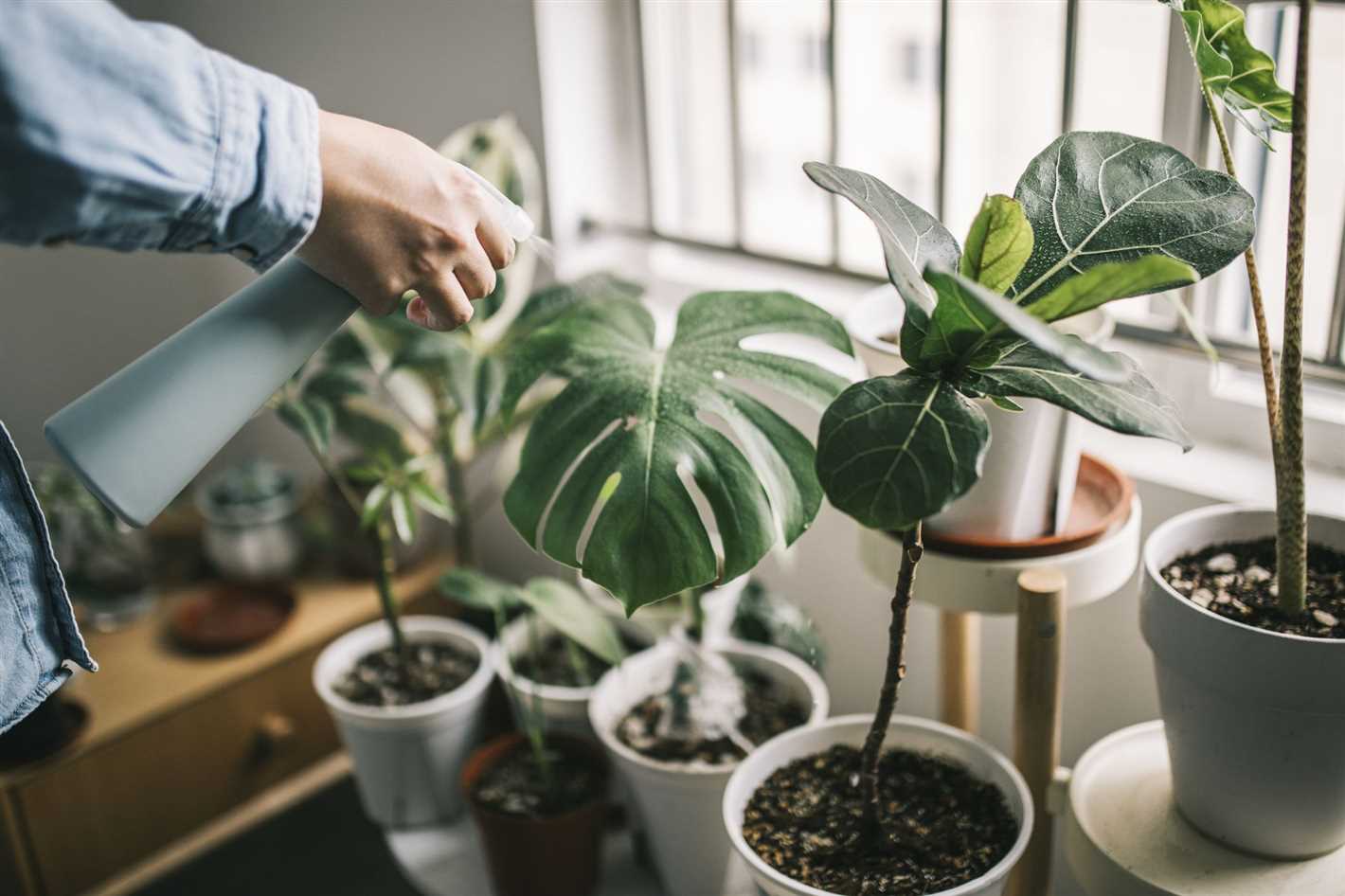
When selecting houseplants for shady areas of your home, it’s important to choose varieties that can thrive with limited sunlight. Here are some tips to help you choose the right shade-tolerant houseplants:
Consider Light Requirements
Before buying any houseplants, it’s important to assess the amount of natural light available in the intended location. While shade-tolerant plants can survive in low light conditions, they still need some indirect or filtered light to thrive. Most shade-tolerant plants will require bright, indirect light rather than direct sunlight.
Choose Varieties Adapted to Low Light
Some houseplants have naturally adapted to survive in low light conditions. These varieties are often classified as “low light” or “shade-tolerant” plants. Some popular options include snake plants, pothos, peace lilies, and ZZ plants. These plants are known for their ability to thrive in areas with limited sunlight.
Consider Leaf Color and Texture
When choosing shade-tolerant houseplants, consider the color and texture of their leaves. Plants with darker green leaves are better at absorbing and utilizing the limited light available. Additionally, plants with larger leaves can capture more light, making them ideal for shady areas. Look for plants with shiny or glossy leaves as they can reflect light and brighten up darker spaces.
Check Watering Needs
Before bringing home shade-tolerant houseplants, it’s important to understand their watering needs. Some shade-tolerant plants, like ferns, prefer consistently moist soil, while others, like cacti, need well-drained soil and less frequent watering. Understanding the watering requirements of your chosen plants will ensure their long-term success in a shady area.
Avoid Varieties That Require Full Sun
When purchasing houseplants for shady areas, it’s best to avoid varieties that require full sun. These plants are not suited for low light conditions and may struggle to survive or become leggy and weak. Always read the plant’s care instructions or consult with a knowledgeable plant expert to ensure you are purchasing the right plants for your shady space.
Consider Artificial Light Sources
If your home has extremely low light conditions, you may need to supplement with artificial light sources such as grow lights. This can provide the necessary light spectrum for shade-tolerant plants to thrive. Make sure to choose the right type of grow light for the specific light requirements of your chosen houseplants.
By considering the light requirements, leaf characteristics, and watering needs of shade-tolerant houseplants, you can select the right varieties to bring life and beauty to shaded areas of your home.
Essential Care for Shade-Tolerant Houseplants
Shade-tolerant houseplants can be a perfect addition to any indoor space that lacks natural light. While these plants are more adaptable to low-light conditions, they still require proper care to thrive. Follow these essential care tips to ensure your shade-tolerant houseplants stay healthy and vibrant.
1. Choose the Right Location
Place your shade-tolerant houseplants in an area of your home that receives minimal direct sunlight. These plants prefer bright, indirect light or dappled shade. Avoid placing them in bright, sunny spots as it can cause sunburn on their delicate leaves.
2. Provide Adequate Watering
Proper watering is crucial for shade-tolerant houseplants. Before watering, check the moisture level of the soil by inserting your finger about an inch deep. If it feels dry, it’s time to water. However, make sure not to overwater as it can lead to root rot. Water thoroughly and allow the soil to dry out slightly between waterings.
3. Use Well-Draining Soil
Shade-tolerant houseplants require well-draining soil to prevent waterlogging. Choose a high-quality potting mix that provides good drainage. Avoid heavy soils that tend to retain excess moisture. Adding perlite or sand to the potting mix can also improve drainage.
4. Maintain Consistent Humidity
Many shade-tolerant houseplants thrive in higher humidity levels. To increase humidity, mist the leaves with water regularly using a spray bottle. You can also place a tray filled with water near the plants or use a humidifier to create a more humid environment.
5. Fertilize Regularly
Provide regular nourishment to your shade-tolerant houseplants by fertilizing them every 2-4 weeks during the growing season. Use a balanced liquid fertilizer or slow-release granules specifically formulated for indoor plants. Follow the instructions on the fertilizer packaging for dosage and application methods.
6. Keep an Eye for Pests
Even shade-tolerant houseplants can be susceptible to pests such as spider mites, mealybugs, and scale insects. Regularly inspect your plants for any signs of pest infestation, such as webbing, sticky residue, or distorted leaves. If pests are present, treat them promptly with natural or chemical pest control methods.
7. Prune and Groom
Prune your shade-tolerant houseplants regularly to maintain their shape and promote healthy growth. Remove any dead, yellowing, or damaged leaves and stems. Groom the plants by wiping the leaves with a damp cloth to remove dust and improve their appearance.
8. Monitor Temperature
Shade-tolerant houseplants generally prefer temperatures between 60-75°F (15-24°C). Avoid exposing them to extreme temperatures or drafts, such as near a heater or air conditioner. Sudden temperature changes can stress the plants and affect their overall health.
With proper care and attention, your shade-tolerant houseplants will thrive and bring beauty to your indoor space. Remember to adjust your care routine based on the specific needs of each plant species, and enjoy the benefits of having greenery in your home.
Watering Tips for Shade-Tolerant Houseplants
Proper watering is crucial for the health and well-being of shade-tolerant houseplants. While they may require less sunlight, their water needs remain just as important. Here are some tips to ensure your shade-tolerant houseplants receive adequate moisture:
1. Check the soil moisture
Before watering your shade-tolerant houseplants, always check the soil moisture. Stick your finger into the soil about an inch deep. If it feels dry, it’s time to water. If it still feels moist, hold off on watering for a few more days.
2. Use room temperature water
Avoid using water that is too cold or too hot when watering your shade-tolerant houseplants. Room temperature water is best, as extreme temperatures can shock the roots and cause damage. Fill a watering can and let it sit for a few hours to come to room temperature before using.
3. Water thoroughly
When watering your shade-tolerant houseplants, aim to thoroughly moisten the soil. Water until you see it draining out of the bottom of the pot. This ensures that the entire root system is adequately hydrated.
4. Adjust watering frequency based on season
The watering needs of shade-tolerant houseplants may vary depending on the season. During the warmer months, they may require more frequent watering as the soil dries out faster. In cooler months, reduce the frequency of watering to prevent overwatering and root rot.
5. Avoid waterlogged soil
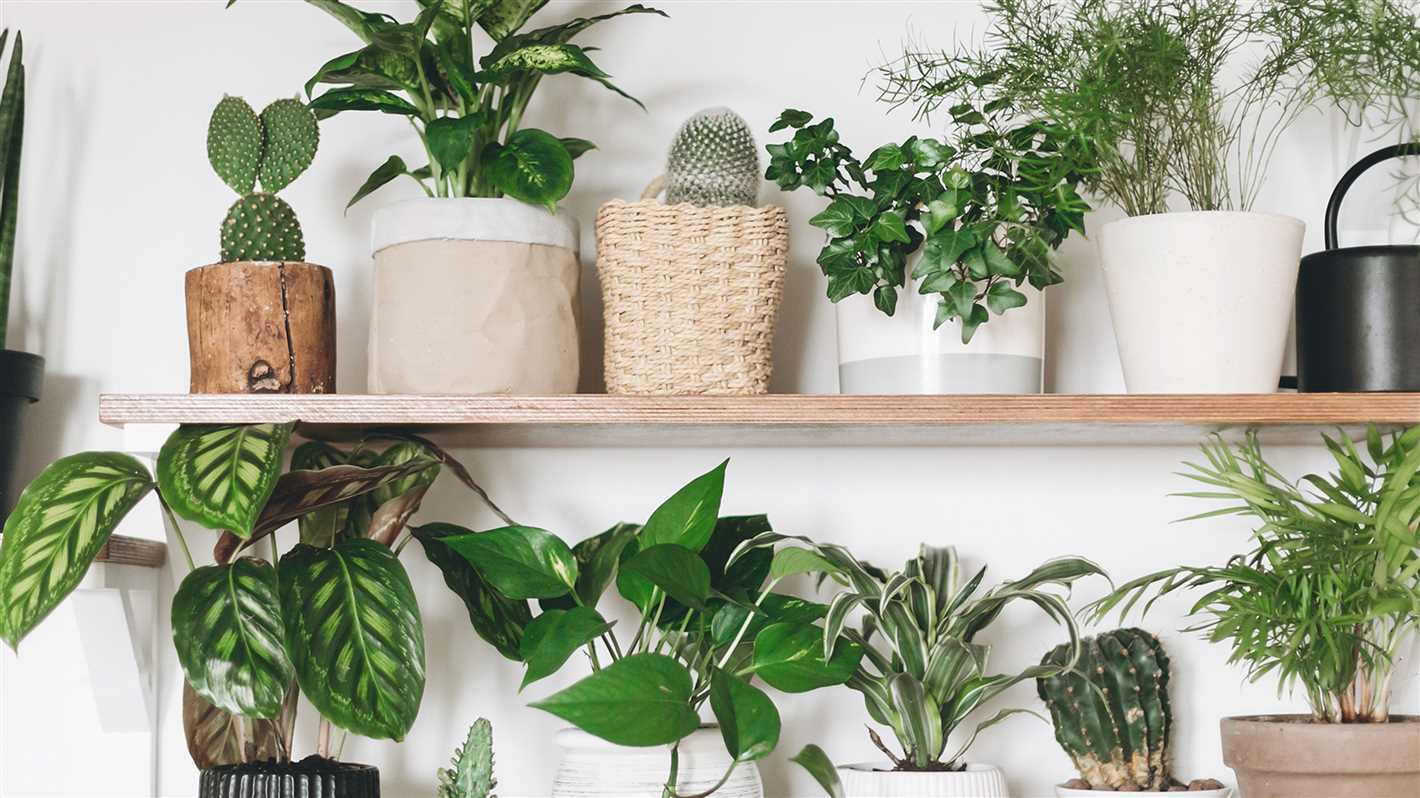
While shade-tolerant houseplants enjoy moist soil, they do not thrive in waterlogged conditions. Ensure that the pots have drainage holes to allow excess water to escape. If you notice standing water in the saucer or bottom of the pot, remove it to prevent root rot.
6. Consider using a moisture meter
If you struggle to determine the moisture level in the soil, consider using a moisture meter. These devices can provide an accurate reading of the soil moisture, helping you determine when it’s time to water your shade-tolerant houseplants.
7. Mist the leaves
In addition to watering the soil, misting the leaves of shade-tolerant houseplants can help increase humidity levels. Fill a spray bottle with room temperature water and lightly mist the leaves once or twice a week. This mimics the moist, shady environment these plants thrive in.
8. Monitor your plants
Keep a close eye on your shade-tolerant houseplants and monitor their overall health. Signs of overwatering include yellowing leaves, wilting, and root rot. If you notice any of these signs, adjust your watering routine accordingly.
By following these watering tips, you can ensure that your shade-tolerant houseplants receive the right amount of moisture for optimal growth and development.
Fertilizing Shade-Tolerant Houseplants
Providing adequate nutrients is essential for the health and vigor of shade-tolerant houseplants. While these plants may not require as much light as their sun-loving counterparts, they still need proper fertilization to thrive. Here are some tips on fertilizing shade-tolerant houseplants:
1. Choose the Right Fertilizer
When selecting a fertilizer for shade-tolerant houseplants, opt for a balanced formula. Look for a fertilizer labeled with an N-P-K ratio such as 10-10-10 or 20-20-20. These numbers indicate the percentage of nitrogen (N), phosphorus (P), and potassium (K) in the fertilizer. A balanced formula will provide the essential macronutrients that plants need for healthy growth.
2. Follow the Recommended Application Rates
Read the instructions on the fertilizer package carefully and follow the recommended application rates. Over-fertilizing can lead to nutrient imbalances and harm the plants. Under-fertilizing, on the other hand, may result in weak growth. It’s important to strike a balance and provide the right amount of nutrients without overwhelming the plants.
3. Use a Slow-Release Fertilizer
Consider using a slow-release fertilizer for shade-tolerant houseplants. These fertilizers gradually release nutrients over an extended period, providing a steady supply of nutrients to the plants. Slow-release fertilizers are convenient and reduce the risk of over-fertilizing. Follow the instructions on the package for proper application.
4. Apply Fertilizer During the Growing Season
Apply fertilizer to shade-tolerant houseplants during the active growing season, which is typically from spring to early fall. This is when the plants require the most nutrients for growth and development. Avoid fertilizing during the dormant period, as the plants may not absorb the nutrients effectively.
5. Water Properly after Fertilizing
After applying fertilizer, water the plants thoroughly to ensure proper nutrient uptake. This helps to prevent fertilizer burn and allows the plant roots to access the nutrients in the soil. Water the plants until the excess liquid drains out from the bottom of the pot.
6. Monitor Plant Reactions
Pay attention to how your shade-tolerant houseplants respond to fertilization. If the plants show signs of nutrient deficiencies or excesses, such as yellowing leaves or stunted growth, adjust the fertilization regimen accordingly. Regularly monitor the plants for any changes and make necessary adjustments to maintain their health.
By following these tips and providing appropriate fertilization, you can ensure the optimal growth and well-being of your shade-tolerant houseplants.
Common Issues with Shade-Tolerant Houseplants
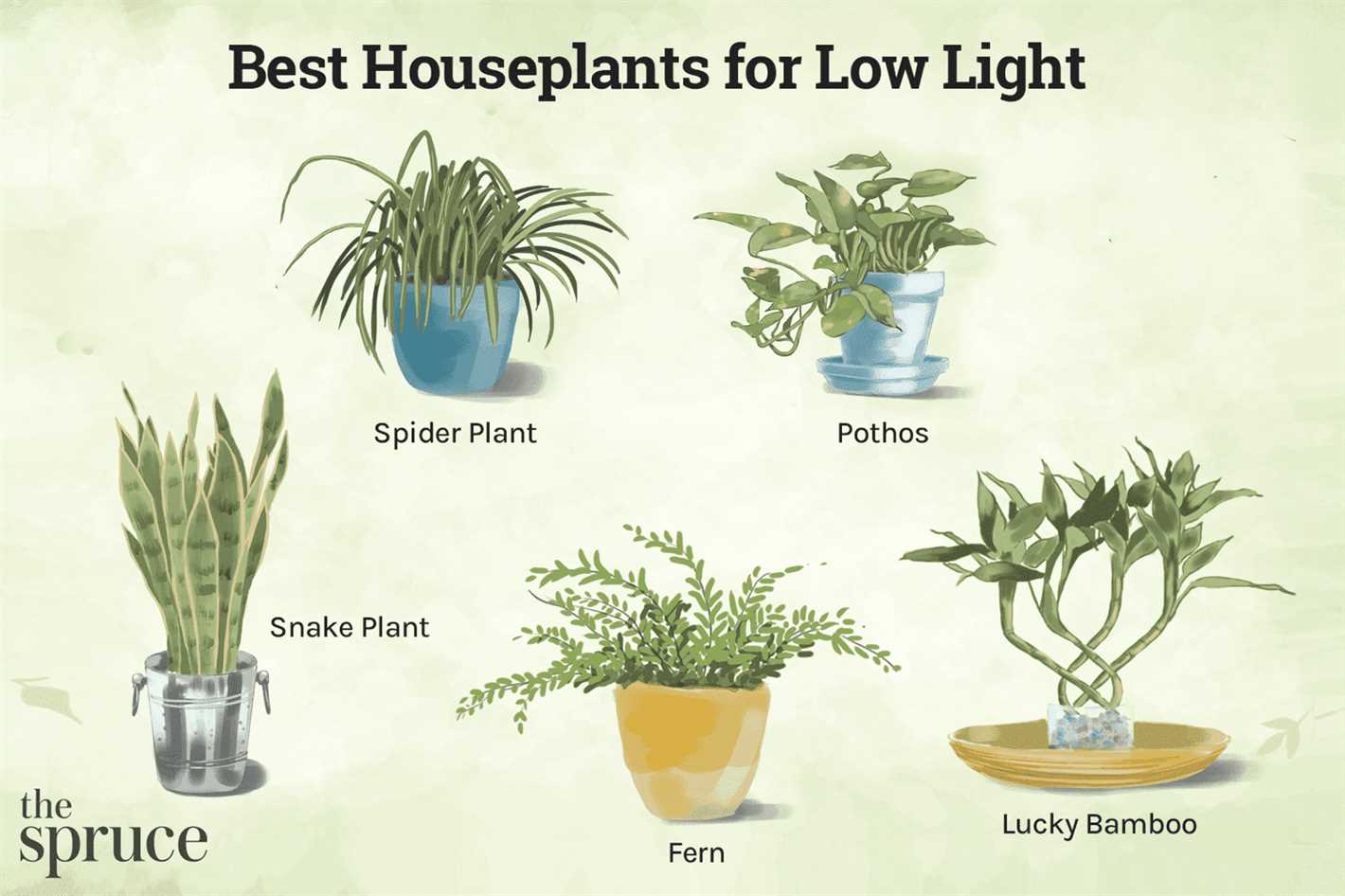
While shade-tolerant houseplants are generally low-maintenance and easy to care for, they can still face a few common issues. Understanding these problems and knowing how to solve them will help ensure the health and vitality of your shade-loving plants.
1. Overwatering
One of the most common mistakes when caring for shade-tolerant houseplants is overwatering. These plants generally don’t require as much water as their sun-loving counterparts. Ensure that you are providing proper drainage and allow the soil to dry out slightly between waterings.
2. Insufficient Light
Even though shade-tolerant houseplants can survive in low-light conditions, they still need some amount of filtered light to thrive. If your plant is not receiving enough light, it may become leggy and weak. Consider moving it to a location with slightly more light or supplementing with artificial lighting.
3. Nutrient Deficiencies
Shade-loving plants may have specific nutrient requirements. Lack of essential nutrients can cause stunted growth, yellowing leaves, and overall poor health. Use a balanced fertilizer specifically formulated for shade-tolerant plants and follow the recommended dosage to ensure your plants receive the necessary nutrients.
4. Pests and Diseases
While shade-loving houseplants are generally less susceptible to pests and diseases, they can still be affected. Common pests include mealybugs, spider mites, and scale insects. Regularly inspect your plants for any signs of infestation and treat them immediately using appropriate insecticides or natural remedies.
5. Improper Temperature and Humidity
Shade-tolerant houseplants usually prefer cooler temperatures and higher humidity levels. Exposure to extreme temperatures or excessive dryness can cause stress and damage to the plants. Maintain a consistent temperature range of 65-75°F (18-24°C) and try to increase humidity by misting the leaves or using a humidifier.
6. Wrong Potting Mix
Using the wrong type of potting mix can impact the growth and health of shade-tolerant houseplants. They typically require a well-draining mix that retains some moisture without becoming waterlogged. Opt for a high-quality potting mix specifically designed for indoor plants or mix your own using ingredients like peat moss, perlite, and compost.
| Issue | Solution |
|---|---|
| Overwatering | Allow soil to dry between waterings and ensure proper drainage. |
| Insufficient Light | Move to a location with more filtered light or supplement with artificial lighting. |
| Nutrient Deficiencies | Use a balanced fertilizer formulated for shade-tolerant plants according to the recommended dosage. |
| Pests and Diseases | Regularly inspect and treat plants for pests and diseases using appropriate methods or remedies. |
| Improper Temperature and Humidity | Maintain a consistent temperature range of 65-75°F (18-24°C) and increase humidity levels through misting or using a humidifier. |
| Wrong Potting Mix | Use a well-draining potting mix specifically designed for indoor plants or create your own using suitable ingredients. |
By addressing these common issues and implementing the appropriate solutions, you can ensure that your shade-tolerant houseplants thrive and beautify your indoor space.
Propagating Shade-Tolerant Houseplants
Propagating shade-tolerant houseplants is a great way to expand your collection without having to spend a lot of money. Many shade-tolerant houseplants can be easily propagated from stem or leaf cuttings. Here are some tips and tricks to help you successfully propagate your shade-tolerant houseplants:
1. Stem Cuttings
One of the easiest ways to propagate shade-tolerant houseplants is through stem cuttings. Here’s how to do it:
- Select a healthy stem from the parent plant, making sure it has several nodes or leaf joints.
- Using a clean, sharp pair of scissors, cut the stem just below a node.
- Remove any lower leaves on the stem, leaving only a few leaves at the top.
- Dip the cut end of the stem in rooting hormone powder to promote root growth.
- Place the stem cutting in a small pot filled with moist potting soil.
- Cover the pot with a plastic bag or place it in a mini greenhouse to create a humid environment.
- Keep the soil moist but not soggy, and place the pot in a warm, shaded area.
- After a few weeks, you should start to see new roots forming. Once the roots are well established, you can transplant the new plant into a larger pot.
2. Leaf Cuttings
Some shade-tolerant houseplants can also be propagated from leaf cuttings. Here’s how to do it:
- Select a healthy leaf from the parent plant, making sure it is free from any damage or disease.
- Cut the leaf off the plant, making a clean cut close to the stem.
- Place the leaf cutting in a small pot filled with moist potting soil, burying the stem end in the soil.
- Keep the soil moist but not soggy, and place the pot in a warm, shaded area.
- After a few weeks, you should start to see new plantlets forming at the base of the leaf. Once these plantlets have developed roots, you can transplant them into their own individual pots.
3. Division
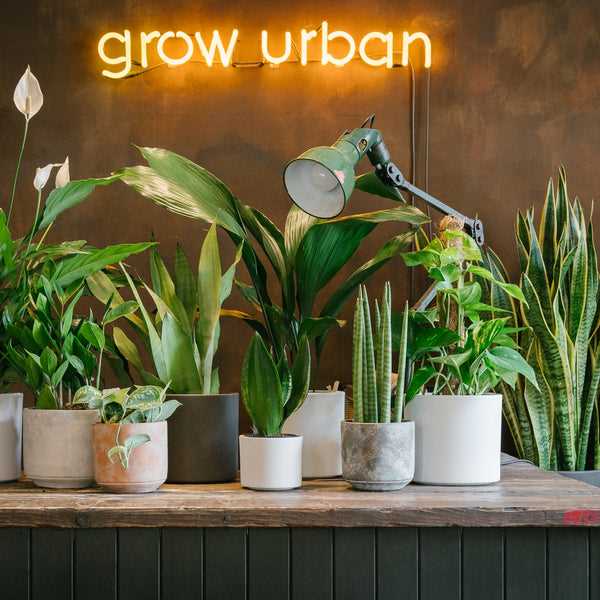
In addition to stem and leaf cuttings, some shade-tolerant houseplants can be propagated by dividing their root ball. Here’s how to do it:
- Carefully remove the plant from its pot, keeping the root ball intact.
- Gently tease apart the roots into smaller sections, making sure each section has a good amount of roots and foliage.
- Plant each divided section into its own pot filled with fresh potting soil.
- Water the newly divided plants thoroughly and place them in a shaded area until they become established.
By following these propagation techniques, you can easily multiply your shade-tolerant houseplants and create a lush indoor garden that thrives in low-light conditions. Experiment with different plants and methods to find what works best for you and enjoy the satisfaction of growing your own plants from cuttings.
Q&A:
What are some houseplants that thrive in low-light conditions?
Some houseplants that thrive in low-light conditions include snake plants, pothos, peace lilies, and ZZ plants. These plants are known for their ability to adapt to lower light levels and still thrive.
How often should shade-tolerant houseplants be watered?
The watering frequency for shade-tolerant houseplants can vary depending on factors such as the type of plant, potting mix, and ambient humidity. As a general guideline, it is recommended to allow the top 1-2 inches of soil to dry out between waterings.
Can shade-tolerant houseplants be placed near a north-facing window?
Yes, shade-tolerant houseplants can be placed near a north-facing window. North-facing windows usually receive the least amount of direct sunlight, making it an ideal spot for shade-tolerant plants that prefer indirect light.
Are there any specific care tips for shade-tolerant houseplants?
Yes, there are a few care tips for shade-tolerant houseplants. It is important to avoid overwatering, as these plants are more susceptible to root rot in overly moist conditions. Additionally, periodic cleaning of the leaves with a damp cloth can ensure that the plants receive adequate light and maximize photosynthesis.
What are the benefits of having shade-tolerant houseplants in a home?
Having shade-tolerant houseplants in a home can provide several benefits. They can help purify the air by removing toxins, increase humidity, and create a more visually pleasing and calming environment. Additionally, studies have shown that being around plants can help reduce stress and improve overall well-being.
Video:
9 Essential Tips To Make Your Houseplants Thrive







